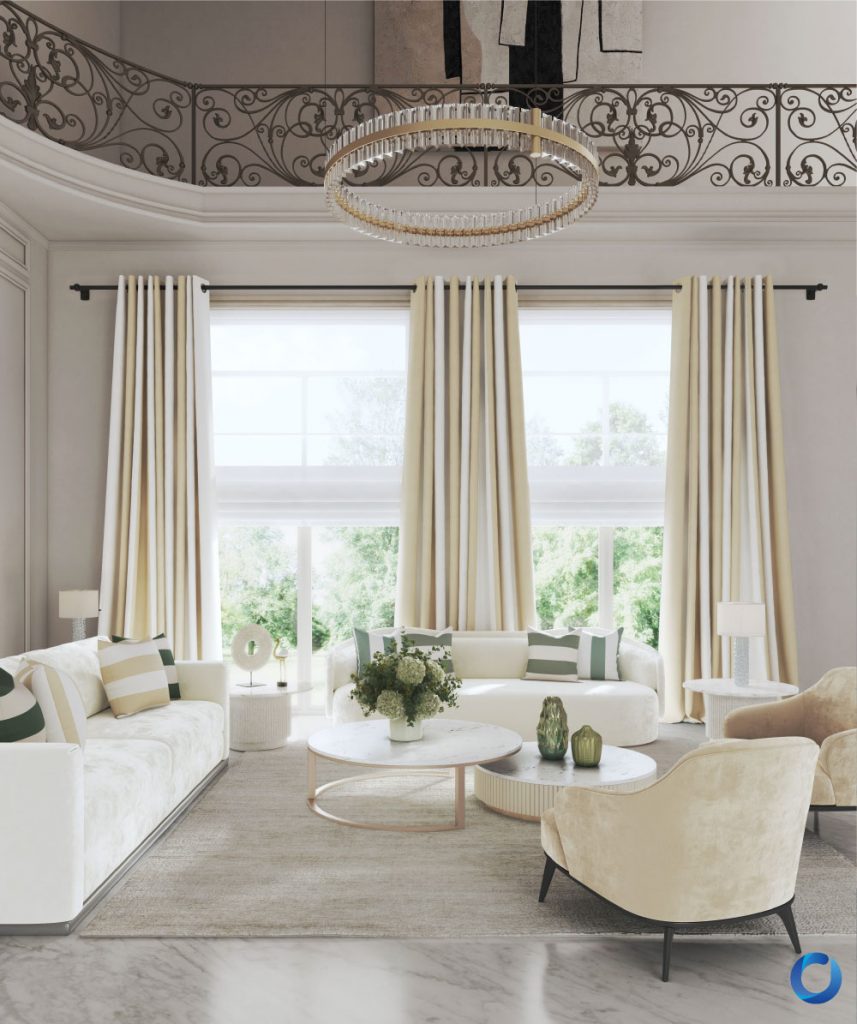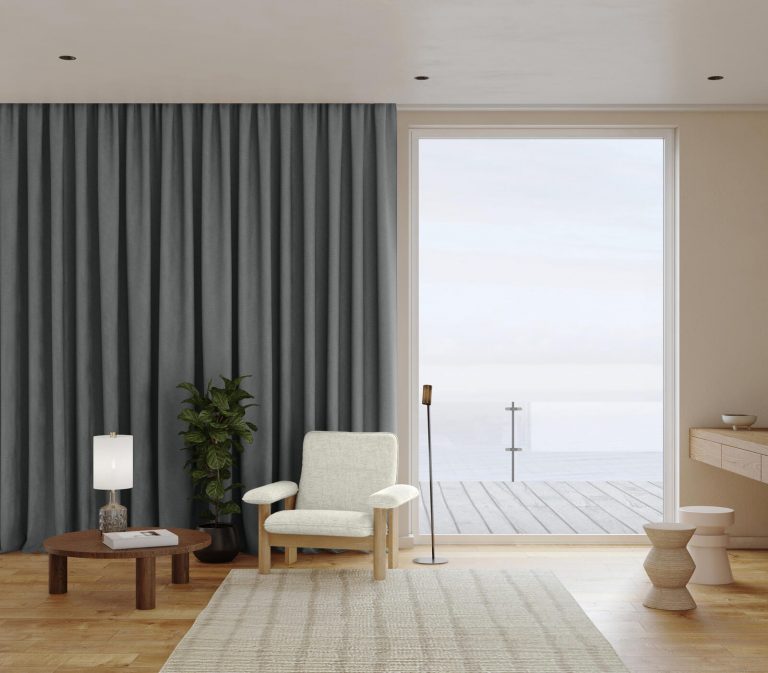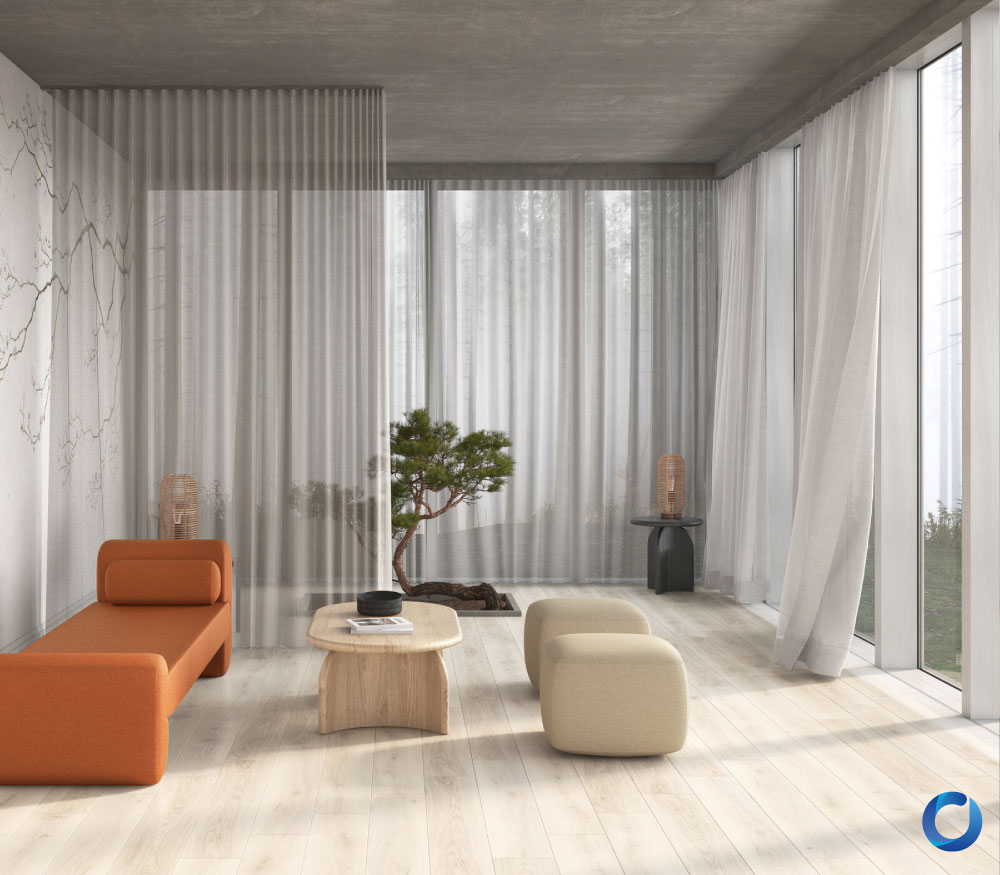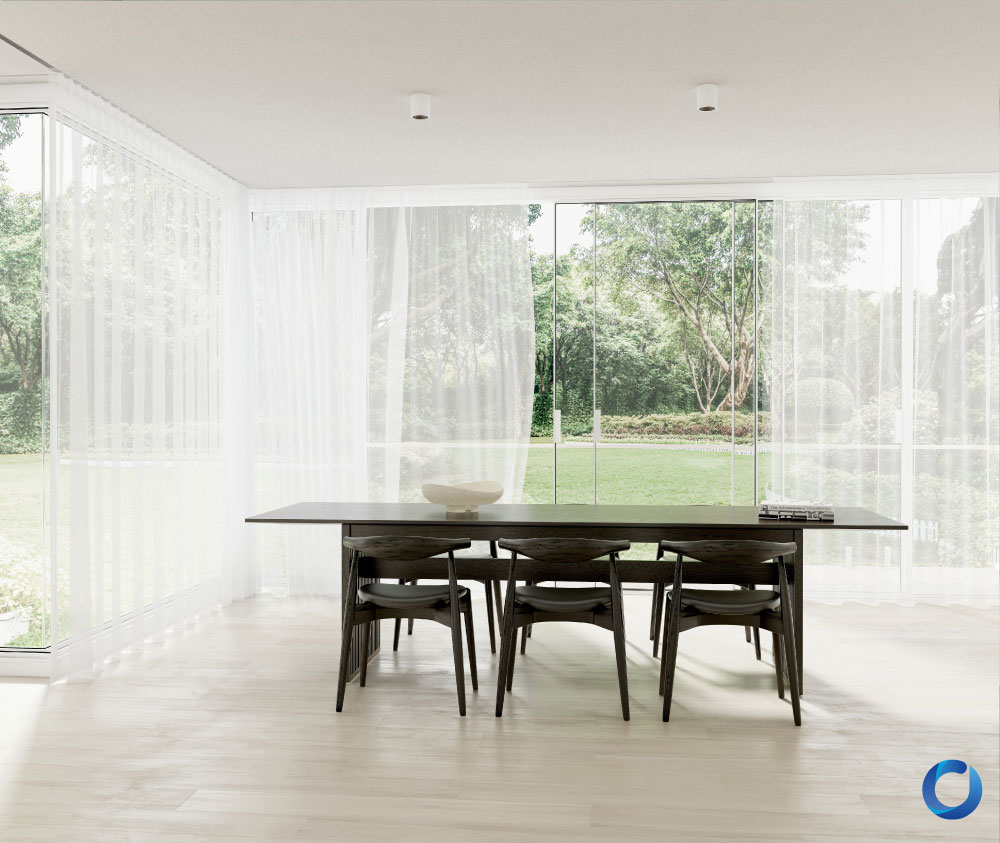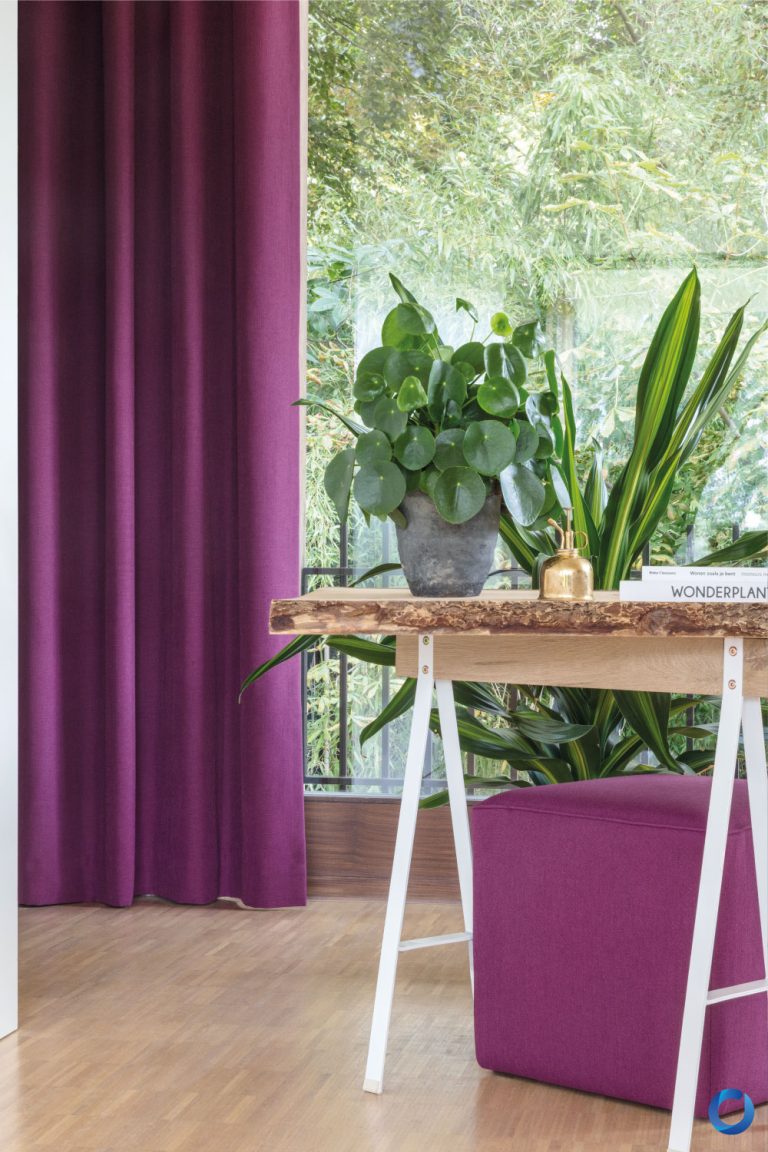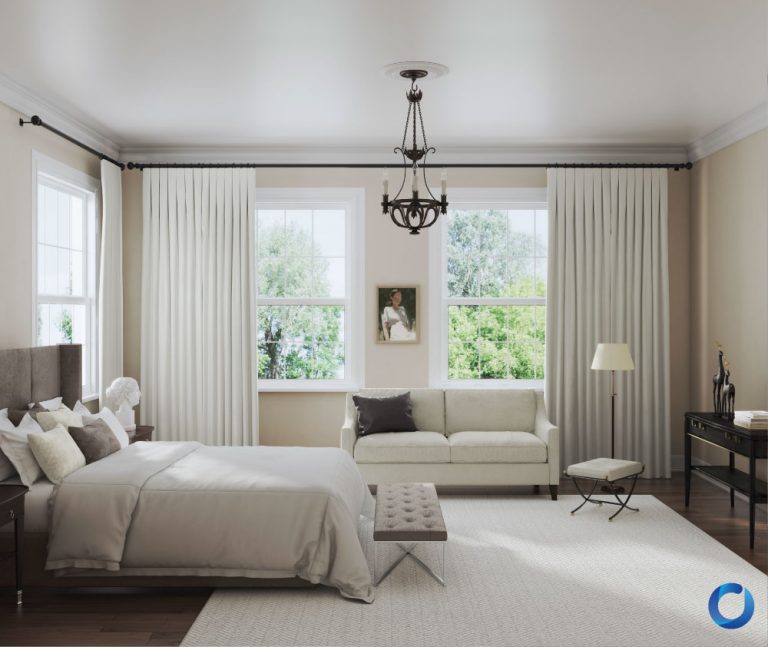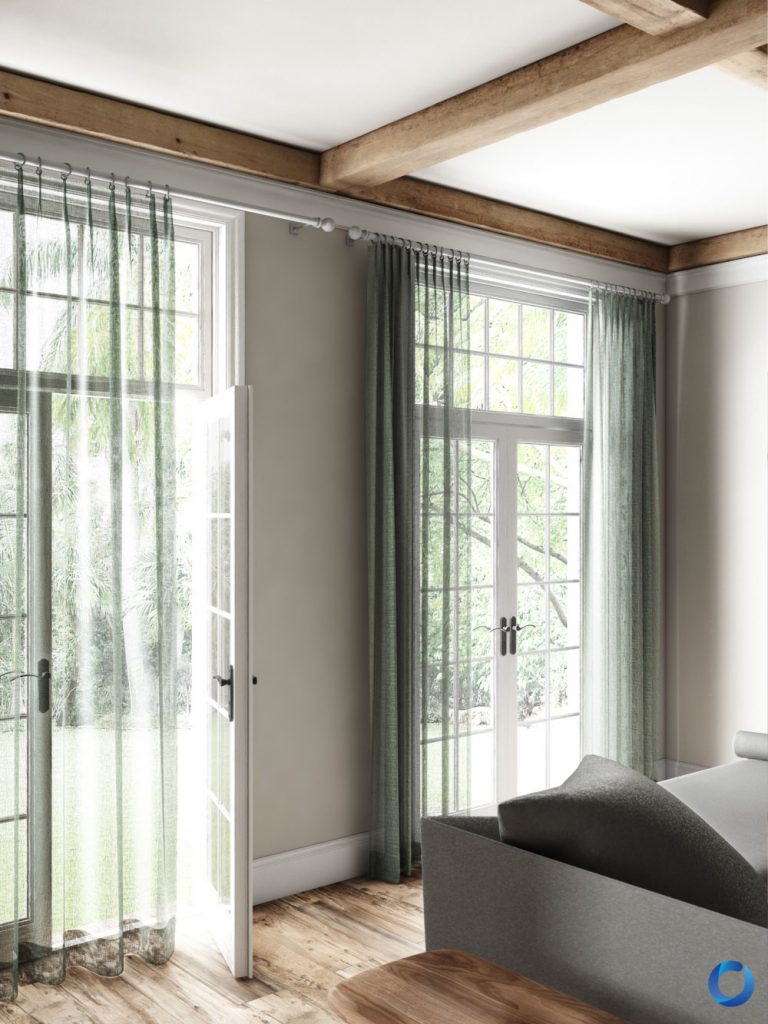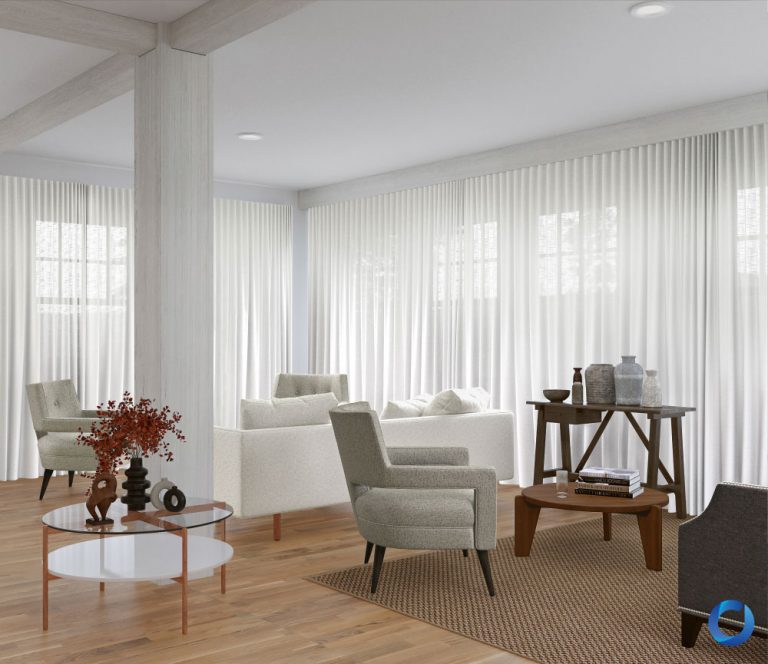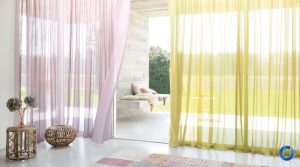
In 2024, the push towards sustainable living is more compelling than ever. People are increasingly prioritising reducing waste, embracing circular living, and finding innovative ways to minimise our environmental footprint in every aspect of daily life. This shift extends into our homes, where even the smallest design choices can have a significant impact. Sustainability isn’t just about grand gestures; it begins with mindful decisions in our immediate surroundings. Curtains, often overlooked, play a pivotal role in creating an eco-friendly living environment. Understanding their role in interior design is crucial for making informed choices that align with sustainable living principles.
Curtains and drapery primarily serve to regulate the amount of natural light entering a room. They can filter, soften, or completely block out sunlight, helping to reduce glare and protect furniture and floors from UV damage. By controlling the influx of natural light, curtains contribute to the room’s comfort and can even help regulate indoor temperatures, potentially reducing the need for artificial lighting and air conditioning. This energy-saving aspect adds another layer to their environmental significance. Aesthetically, curtains are an essential element of interior design. They have the power to transform a space, adding texture, colour, and personality to a room. Whether opting for a minimalist sheer or a more opulent, heavy drape, curtains can enhance the visual appeal and mood of any space. They can frame windows, draw the eye upwards to create an illusion of height, or add a touch of softness to an otherwise stark room. By choosing eco-friendly materials for curtains, homeowners can marry style with sustainability, ensuring that their design choices contribute positively to both their living environment and the planet.
In essence, the choice of curtains goes beyond mere decoration; it encompasses the interplay of light, privacy, energy efficiency, and aesthetic enhancement. By selecting sustainable materials and designs, we can make a meaningful contribution to our personal well-being and the health of the environment. As we continue to integrate sustainability into every facet of our lives, even the curtains we choose for our homes become an expression of our commitment to a more eco-conscious lifestyle.
The Importance of Eco-Friendly Curtains
Choosing eco-friendly curtain materials is more than just a trend – it’s a step towards a more sustainable lifestyle. So I hope that by the end of this article, your perspective on the role of drapery in interior design can be broadened as it highlights the importance of investing in more sustainable, eco-friendly materials to make a more conscious and stylish choice for your home. Traditional curtain materials and production methods can have significant environmental impacts, including the use of harmful chemicals, excessive water consumption, and the generation of waste. At Acacia, we believe that by opting for eco-friendly materials, you directly contribute to reducing these negative effects. Moreover, sustainable curtains can also offer benefits such as improved indoor air quality, enhanced durability and a unique aesthetic that aligns with a conscious, modern lifestyle.
Opting for Organic Cotton
Organic cotton is a leading choice for eco-friendly curtains. Unlike conventional cotton, which is heavily treated with pesticides and synthetic fertilisers, organic cotton is grown using methods that support soil health and biodiversity. The production of organic cotton also uses significantly less water and energy, making it a more sustainable option. From a user standpoint, curtains made from organic cotton are also soft, breathable, and hypoallergenic, making them an ideal choice for homes with children, pets, or allergy sufferers. In terms of design, organic cotton curtains also offer a natural, understated elegance that can complement various interior styles, from rustic and textured to contemporary looks.
Choosing Linen
Besides cotton, linen is also another popular and fantastic eco-friendly material, prized for its durability and minimal environmental impact. Having a small ecological footprint, linen is easier to grow compared to cotton, and its long-lasting nature means that it can endure the test of time, reducing the need for frequent replacements and minimising waste. Made from the flax plant, this plant is a crop that is harvested after 100 days and then completely processed into linen. The linseed for oil, food and cosmetics, fibres for linen fabrics, rope and paper, and the rest for animal feed, it is a true zero-waste material. With the current trends of minimalism and eclectic contemporary styles, linen’s natural texture and breathable quality also makes it an excellent choice for creating an airy, relaxed atmosphere in any room. The fabric also has a natural shine, making it also a really elegant fabric choice for any space.
Using Recycled Fabrics
In recent years, recycled materials are also at the forefront of sustainable curtain options. Fabrics made from recycled plastics, such as PET bottles, are being transformed into beautiful, high-quality curtains. This process not only reduces waste by repurposing materials that would otherwise end up in landfills but also consumes less energy and raw materials compared to producing brand new fabrics. Recycled polyester curtains for instance, also offer the same look and feel as their non-recycled counterparts while making a positive impact. With various creative and intricate designs, brands such as Acacia are also now creating collections made entirely out of recycled materials that showcases not only intricate weaving details, vibrant colours and interesting textures that can cater to various different aesthetic preferences.
Composite Fabrics and Standards
At Acacia, we also offer composite fabrics that blend materials such as recycled polyester, cotton and linen that offers a versatile option for eco-conscious homeowners. After countless testing and experimentation, the various composite fabrics leverage the strengths of each material, creating not only a durable but attractive textile. Recycled polyester made from post consumer plastics which reduces the demand for virgin resources, when mixed with organic cotton and linen, results in a composite fabric that not only reduces the ecological footprint but also offers enhanced performance. These blends often feature the softness and breathability of cotton, the natural shine and textures of linen as well as the strength and wrinkle resistance of polyester, making them ideal for curtains that need a balance of aesthetics with durability. As we make this step towards a more sustainable and responsible brand, our fabrics also uphold a certain level of standard, which are certified to ensure that we are a brand that is true and honest with what we put out. Organic Content Standard (OCS) is awarded to various of our fabrics that contain organic content such as organic cotton. It ensures that each party involved in the chain of production, from yarn supply through to finished goods, is closely audited and controlled to ensure that the item contains genuine organic content.
Natural Dyes and Finishes
In addition to choosing eco-friendly fabrics, it is also important to consider the dyes and finishes used in curtain production. Conventional dyes often contain toxic chemicals that can harm the environment and affect indoor air quality. Opting for curtains dyed with natural, plant-based dyes can significantly reduce these negative impacts. Natural dyes also produce beautiful, earthy tones that enhance the organic appeal of eco-friendly curtains and easily complement any room while adding a fun pop of colour and tone to the space. Furthermore, try also looking for curtains with non-toxic, water-based finishes that preserve the fabric’s natural qualities while adding stain resistance or UV protection without compromising sustainability. FibreGuard, Acacia Fabric’s stain resistant fabrics take fabrics to a whole other level. Hard-wearing, soft to touch and stylish, this stain-resistant fabric technology is not only family and pet-friendly, but is engineered to meet the demands of professional, hospitality and residential use. Certified under the STANDARD 100 by OEKO-TEX®, it is also our promise to you that our drapery and upholstery fabrics will not release any harmful finishes or chemicals into the world.
Choosing the Right Eco-Friendly Curtains for Your Home
Understanding and practising sustainability involves more than just learning about eco-friendly options; it’s about integrating mindful choices into your everyday life. Choosing eco-friendly curtains for your home is one of those small yet impactful steps toward a more sustainable lifestyle. By opting for these sustainable options, you’re not just making a design choice; you’re contributing to a larger movement that values resource conservation, ethical production, and a reduced carbon footprint.
Depending on the room’s function, lightning and existing decor, Acacia Fabrics offer a wide range of fabrics for your needs. From a minimalistic and timeless approach, fabrics such as organic cotton and linen provide a natural and rustic touch while maintaining a sense of elegance. Meanwhile, for bolder, or experimental looks, composite fabrics are a great option to not only add various layers of colour, textures and patterns but also act as an eye-catching conversation starter whenever you have guests around. Depending on the functionality of the room, such as rooms that require more privacy or vice versa – spaces that require more light and air to come through, experiment with eco-friendly materials and how they all bring different qualities of light into different spaces. For instance, organic cotton, linen and recycled polyester are able to be woven into sheers which are soft, lightweight and breathable, offering a gentle diffusion of light, and bringing an element of airiness into any room. Meanwhile, these same fabrics as well as composite or even our FibreGuard line can also be made into blackout curtains which block out sunlight completely or partially for spaces that require total darkness and privacy. Spaces like these include cinema rooms, bedrooms or even layered in main living spaces along with sheers to offer versatility whereby when drawn, sheers can let in sunlight and wind while at night, the blackout curtains can be drawn closed to provide privacy in the space. Choosing eco-friendly blackout curtains involves considering not just the base fabric but also the linings and treatments used to achieve the blackout effect. Opting for natural or recycled materials paired with non-toxic linings can provide effective light-blocking while supporting sustainability.
Conclusion
In 2024, the trend toward eco-friendly curtain materials reflects a broader movement towards sustainable living and conscious consumerism. By choosing curtains made from organic, recycled, or renewable materials, you can significantly reduce your environmental impact while creating a healthier, more stylish home. Whether you opt for the natural elegance of organic cotton, the durability of linen, or the innovative appeal of recycled fabrics, there are eco-friendly options to suit every taste and interior style. Investing in sustainable curtains is not just a design choice; it’s a commitment to a more sustainable future, where the beauty and comfort of our homes coexist harmoniously with the planet.
At Acacia, our ambitions in making a more lasting, and impact driven change extends beyond our manufacturing and production of our fabric and materials. It is a collective effort created together in collaboration with our employees, partners, supplies and our customers. This collaborative effort is consultative and grounded in an approach that prompts all of us to make conscious and informed choices for the future that we all want. Hence we strive to also share our continued sustainability journey, the lessons we learn (and continue to learn), and hope to also bring you along this journey as we continue to move towards a more green and eco-friendly brand.
Reference links:
With FibreGuard Fabrics, You’ll Love to Put Your Feet Up. Acaciafabrics.com. (n.d.).
Our commitment to sustainability. Bru. (n.d.).
Articles suggestion
If you are searching for the perfect curtain to express your personality at home, talk to our sales representatives in here.

